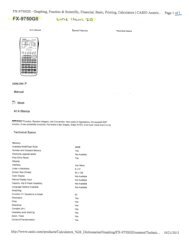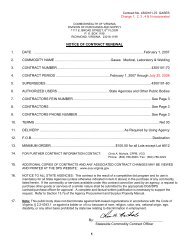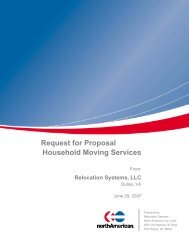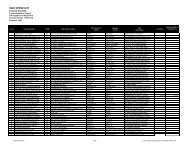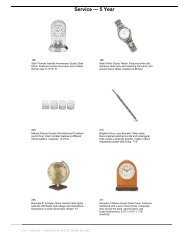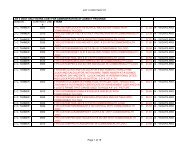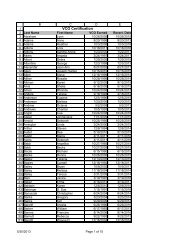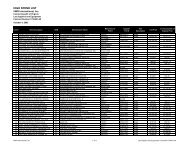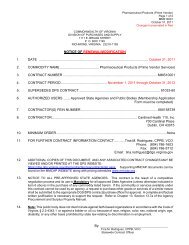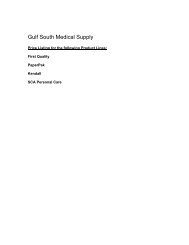attachment 2 section i ? technical specifications commuter coach ...
attachment 2 section i ? technical specifications commuter coach ...
attachment 2 section i ? technical specifications commuter coach ...
You also want an ePaper? Increase the reach of your titles
YUMPU automatically turns print PDFs into web optimized ePapers that Google loves.
Page 4<br />
ATTACHMENT 2<br />
specified. In no case shall the axle weight exceed 22,400 pounds. In the interest of economy in<br />
construction and operation it shall be the goal to manufacture the <strong>coach</strong> as light as possible without<br />
degradation of safety, performance, appearance, comfort and reliability. Total vehicle weight shall not<br />
exceed the gross vehicle weight rating nor axle weight rating at ground as specified. GVWR shall not<br />
exceed 48,000 pounds for a 45-foot bus.<br />
1.5.3 CAPACITY<br />
Rated passenger capacity of the <strong>coach</strong> shall be as outlined below. Provisions to secure two wheelchair<br />
passengers shall also be provided. The overall seating capacity may be reduced when the securement<br />
positions are being utilized.<br />
45 foot/102 inch bus 57 seats<br />
1.5.4 SERVICE LIFE AND MAINTENANCE<br />
1.5.4.1 SERVICE LIFE<br />
The <strong>coach</strong> shall be designed to operate in <strong>commuter</strong> service for at least 12 years or 500,000 miles of<br />
revenue service whichever comes first.<br />
1.5.4.2 MAINTENANCE AND INSPECTION<br />
Scheduled maintenance tasks shall be related and shall be grouped in maximum mileage intervals.<br />
Routine scheduled maintenance actions, such as filter replacement and adjustments, shall not be<br />
required at intervals of less than 6,000 miles, except for routine daily service performed during the<br />
fueling operations. Higher levels of scheduled maintenance tasks shall occur at even multiples of<br />
mileage for lower level tasks.<br />
The manufacturer shall provide a preventive maintenance schedule covering all components upon<br />
delivery of the first production vehicle. Each schedule shall be complete and shall adhere to frequency<br />
intervals considered normal industry standards.<br />
1.5.4.3 MEAN MILEAGE BETWEEN FAILURES<br />
The following are design goals for mean mileage between failures by failure class, provided that all<br />
specified preventive maintenance procedures are followed.<br />
(1) Class 1: Physical Safety. Mean mileage shall be greater than 1,000,000 miles.<br />
(2) Class 2: Road Call. Mean mileage shall be greater than 20,000 miles.<br />
(3) Class 3: Coach Change. Mean mileage shall be greater than 16,000 miles.<br />
(4) Class 4: Bad Order. Mean mileage shall be greater than 10,000 miles.



